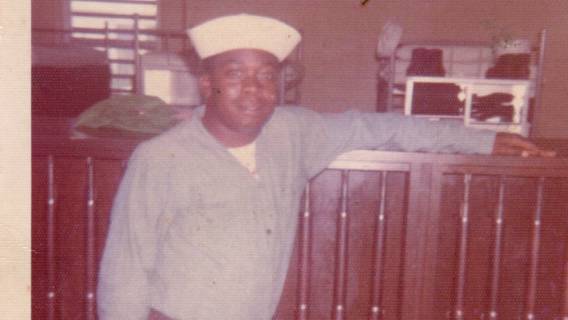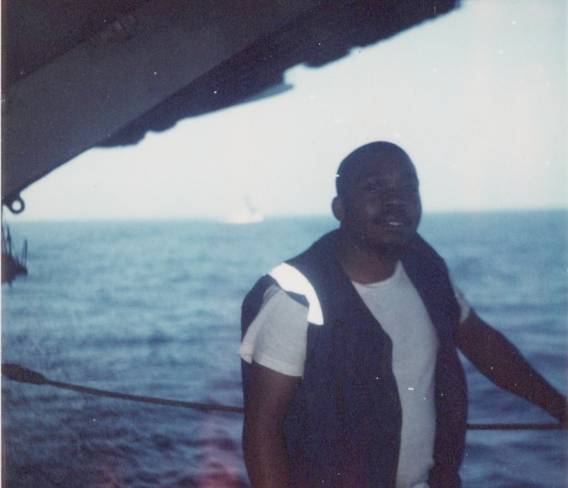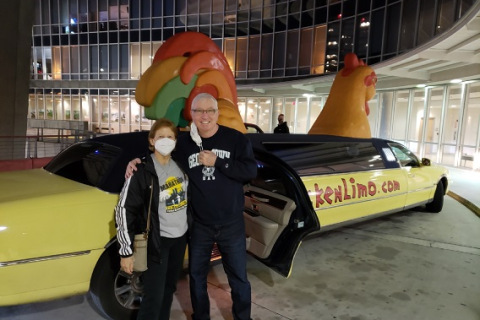Navy Veteran With Asbestosis & Silicosis Has a Passion for Justice

Fact Checked | Written by: Travis Rodgers | Last Update: 04/03/2025 | 7 Min Read
Navy veteran Jerry Cochran was told 50 years ago that he had only five years to live. But he said his faith in God and his work advocating for others has kept him going for the past half a century.
“It’s been a difficult struggle, but I’ve been fighting for so long I think that’s what kept me alive,” he said.
Cochran is from Albany, Georgia, a small town about 200 miles south of Atlanta. Barely out of his teenage years he was diagnosed with a rare lung condition called sarcoidosis. The disease causes growths in the body, commonly in the lungs. The cause of sarcoidosis is unknown, but Cochran is convinced his work on a Navy aircraft carrier caused his illness.
He was also later diagnosed with asbestosis, an interstitial lung disease caused by exposure to asbestos. Cochran also attributes this condition to his time in the military.
Given a Hazardous Assignment
Cochran entered the Navy in 1972 at the age of 19. As one of his first tasks, he was given the job of scraping and grinding nonskid paint off of the USS Independence in Portsmouth, Virginia. Nonskid paint is used on the surface of aircraft carriers to prevent fighter jets from sliding off when landing.
“I was assigned first to the paint crew, where we spray painted the small rooms that were above the flight deck,” Cochran recalled. “After that, for about a month, I was transferred down to the deck crew. And that’s where I started the process of grinding the nonskid paint off of the deck.”
Cochran said he and his coworkers would begin the day in clean white T-shirts, jeans and boots and end the day looking “like we’d come out of a coal mine.”
““[There was] dust everywhere. We didn’t have any protective masks or any protection.”
Cochran said the grinding machine used during the process caused dangerous substances in the paint to quickly spread and scatter into the air.
“It actually grinded and kicked the dust back up in our faces,” he said. “We didn’t know at that time that it was silica [with] aluminum, nickel, asbestos and other minerals in the dust that was being kicked up. Basically the ship was a killing field.”
Cochran then had to sweep up the dust and put it into drums. It wound up in the lungs of Cochran and his fellow sailors. He began having breathing issues soon after starting the job, which he held for nine months. In 1975, just three years after entering the Navy, Cochran was medically discharged.

Search for Answers
Cochran underwent surgery in Pensacola, Florida, where doctors removed lymph nodes and a portion of his lung. He also had liver and spinal surgeries to find out what was happening in his body. While in the hospital he became curious about his diagnosis since his symptoms started changing, so he took a proactive approach.
“I decided that I would go to the medical library and started to do my own research and started reading up on sarcoidosis,” Cochran said.
Cochran said the more he read about sarcoidosis, the more concerned he became that his symptoms just didn’t match up.
“Armed with that information, I knew that something was going on,” he said. “And that made me even more curious about this disease.”
Cochran would continue to go back to the medical library to further research his condition, but after asking many technical questions of doctors, he was told to stop. The hospital even stationed someone at the entrance to the library to make sure he didn’t return.
Once he was out of the Navy, Cochran continued his research while receiving treatment at the Department of Veterans Affairs. He eventually convinced a doctor at the VA to perform a lung biopsy.
In 1991, Cochran was given a new diagnosis – silicosis – a lung disease caused by breathing in small bits of silica, which was an ingredient in the paint he was scraping for nine months on the USS Independence. The symptoms of silicosis include a persistent cough, shortness of breath, weakness and fatigue.

Don’t miss out on the benefits you deserve. Find out what VA benefits are available for veterans like you.
Get a RecordingAsbestosis Diagnosis
Cochran told Asbestos.com he felt like something else was going on inside of his body since his condition was getting worse. In 2010, he was diagnosed with asbestosis after seeing the same doctor who had diagnosed him with silicosis nearly 20 years earlier. He said he struggles to breathe because his lungs aren’t able to expand and contract the way they’re supposed to.
The paint he scraped off of the aircraft carrier all those years ago contained asbestos among other things, leading to his asbestosis. While the condition is incurable, many patients are able to survive for several decades with treatment.
Unlike those who are exposed to asbestos and are later diagnosed with mesothelioma, Cochran’s condition is not a form of cancer. However, an asbestosis diagnosis indicates the person experienced sufficient asbestos exposure that they could be prone to developing asbestos-related lung cancer or pleural mesothelioma.
Advocating for Others
Cochran later went to Washington, D.C., and served on the VA Advisory Committee on Minority Veterans for three years. He brought his issue to the committee and explained everything he had gone through.
In 2001, he helped introduce a bill in Congress through the Department of Defense. It allocated $500,000 for an epidemiological study examining military records that was later published in the American Journal of Medicine. The study found thousands of other veterans who were diagnosed with sarcoidosis.
Soon after, he founded the Jerry Cochran Disabled Veterans Association. The organization helps other veterans get evaluated for their health issues. Cochran’s story was also told on CBS during an episode of 60 Minutes in 2001, as well as multiple times in the 1990s in the pages of The New York Times.
“The government was fighting me continually because they didn’t want this story to get out,” Cochran said. “Because they knew that there were millions of us out here. And literally they’re waiting for us to die. And I’ve buried quite a few of us. In fact, I would work with the widows and the vets before they died, and I had started to get the widows to do autopsies on their husbands.”
Still Fighting for Justice
Today Cochran is on oxygen, has shortness of breath, chest pain, trouble getting around and is dealing with congestive heart failure. He isn’t letting his physical condition stop him from sharing his story with the public.
“I would like to see justice served. We served our country, we went in with the motivation that we’re going in to support and fight for our country. Now, if you’re being sent into combat you’ll be trained how to engage in combat, you’ll be trained how to protect yourself as much as possible in the midst of combat,” he said.
“We didn’t have any training or any knowledge of what was happening to us,” he continued. “You were innocent young men, 18-19 years old, doing a job. They knew the dangers, they knew the downfalls, but yet they put us out there in the midst of it without any knowledge or protection.”
Cochran said his ongoing work advocating for others has kept him going all these years. But he also credits his spiritual walk, where he has leaned on God throughout his long battle. In fact, for the past 39 years, Cochran has been a pastor at New Jerusalem Pentecostal Faith Ministry Inc. in Albany, Georgia. He also has the support of his three sons and his wife.
Cochran said he’ll continue advocating for other veterans and their families.
“I’m gonna fight with every breath that’s in me for justice for all.”





